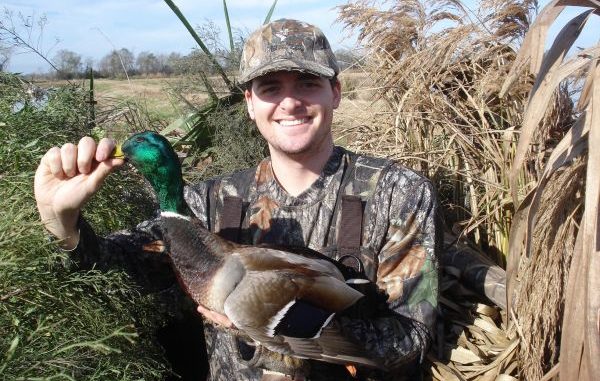
Hynes offers pointers for ducks, bucks and squirrels
Your trusty retriever returns with a monster “chocolate head” — a beautiful pintail, complete with its namesake tail feather dragging the ground.
As luck would have it, the bird is in excellent shape, seemingly scared to death by the barrage of gunfire and appears to be free of any discernible damage. “This one’s for the wall,” you relay to your blind mates.
But now what? What’s the best way to get that bird from this point to the taxidermist’s work bench?
According to Pearl River-area taxidermist Kevin Hynes, your first mistake would be even thinking about putting that bird on the strap.
Winner of the 1999 World Championship of Taxidermy, Hynes offered a number of tips to help keep your bird in ideal condition for mounting.
“Keep that bird off the strap,” Hynes said. “The strap loops or rungs can remove the tiny feathers found on the bird’s neck and head, and those are critical to making a good looking mount.”
He suggested keeping your trophy separate from the rest of the day’s bag.
“Keep a plastic bag like a grocery bag or garbage bag handy to protect the duck and prepare it for the freezer,” he said. “Fold that head back under the wing gently then wrap it up in plastic. Never use newspaper or any other absorbent materials that might lead to drying the bird’s skin.”
Hynes insists that tucking the bird’s head under the wing is critical to protect the neck bones once the bird is frozen.
“You don’t want that neck frozen and sticking out, because it could easily break and that really makes mounting tough,” he said.
Blood is another consideration, particularly in how difficult it can be to remove from lighter-colored feathers. If possible, try to keep blood off the feathers, but try to do it without getting the bird overly wet.
Additionally, Hynes pointed out how much of a factor your chosen load and choke combination can be with the finished mount.
“I try to tell guys to use No. 4 or even No. 6 shot if they can get away with it when trying to bag a trophy bird fit for the wall,” he said. “The larger shot sizes, such as No. 2s and BBs, can make holes in the bird that are extremely difficult to patch up and hide in the finished product.”
Hynes also advised that shooting extra-tight chokes can contribute to excessive damage to birds as well. This can be especially critical in the head and neck area where feathers are not only numerous, but tiny as well.
This is also the time of year that trophy whitetail might encounter the magic bullet or arrow, and Hynes offered some insight on how best to preserve that deer for a quality mount fit for any mantle.
The two most important factors for bucks have to do with proper skinning and preservation of the hide.
“It’s very common for taxidermists to get deer with too little skin for the mount, especially in the brisket area at base of the neck,” he said. “Be sure to include plenty of skin down to the front legs so there’s ample coverage for the mount.
“You can always cut off more, but you can’t add it back on.”
Hynes noted that proper preservation of the entire hide is critical to preserving the skin and preventing bacteria from breaking it down.
“You want to get that hide chilled and ultimately frozen as soon as possible,” Hynes said. “You can ice it down for only a short time, but don’t let it sit in water when the ice melts, as that can contribute to the skin starting to break down.”
If at all possible, Hynes said to try to bag the ice to keep the water from coming into contact with the skin, and be sure to keep the cooler drain open.
And just like with waterfowl, there are also critical parts of a deer to keep from drying out.
“You want to take care of the ears because that’s where the skin is particularly thin, especially at the tips,” he said. “Wrapping the ears in a wet towel can help prevent drying out the skin, making work difficult on your taxidermist.”
Hynes also advised hunters to try to be careful in dispatching the animal, especially when it’s only initially wounded.
“You don’t want to slit the throat, or otherwise damage the neck area if you’re planning to shoulder mount the deer,” he said.
And even though deer tend to hold up better in the freezer because of their thicker skin, Hynes advised that you’re better off getting the animal to your local taxidermist sooner rather than later.
And if a squirrel is taken that looks like it deserves a spot on the wall, Hynes advised to follow the same procedures as you would for a deer by preserving the skinny parts — especially the tail and feet.
With a creature that small, the entire body can be wrapped in a damp towel for freezing and preservation prior to the trip to your taxidermist.


